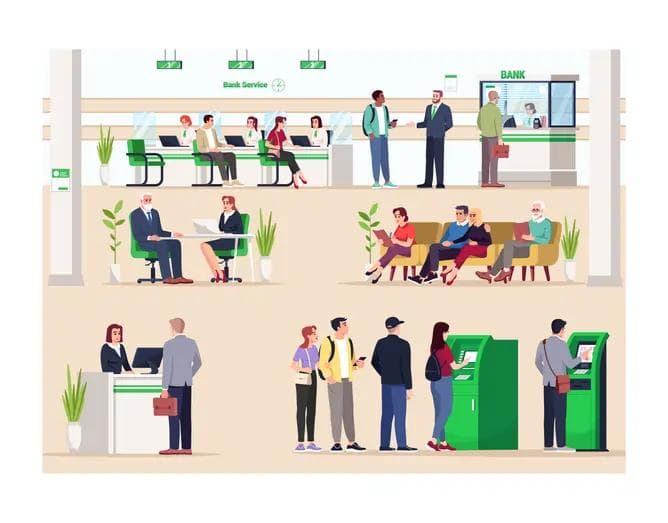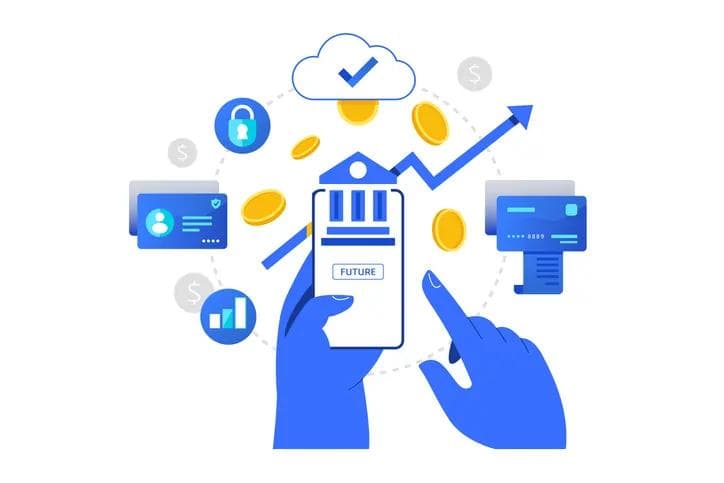Why loyalty is the name of the game for banking in 2022
Why loyalty is the name of the game for banking in 2022
Published by Jessica Weisman-Pitts
Posted on December 13, 2021

Published by Jessica Weisman-Pitts
Posted on December 13, 2021

 By Achille Traore, CEO, White Label Loyalty
By Achille Traore, CEO, White Label Loyalty
The financial sector is hardly renowned for showcasing softer and emotive traits. No surprise then that cultivating customer loyalty is something that it has yet to get right – certainly on a universal scale.
Of course, millions of us will have been with our banks for a long period and there will always be a large segment of folks who rarely – if ever – change their bank. But it’s important to establish from the get-go that we do not mistake apathy and inertia for loyalty. Besides, for every individual who doesn’t switch, there’s a whole lot out there that do, and it’s costing banks millions.
Stop the switching
Banks typically spend around £150 rewarding a new customer for switching their account – a cost justified by the assumption that customers will stay with the same bank for their lifetime. However, the stats tell a different story: 32% of customers leave in the first year of opening a new bank account, according to Joey Coleman. A survey by Deloitte also found that only 19% of banking customers are deemed as “truly loyal” to their bank – these findings were the same across the USA and Europe. Such results suggest that this industry hasn’t scratched the surface of building a loyal customer base.
At the same time, the broader financial services market is becoming increasingly competitive as fintechs and digital giants with volumes of customer data have moved into the market offering everything from ApplePay and PayPal for ease of payments, to retailer credit cards which give their shoppers points. When you throw in frustration over branch closures – data from the Financial Conduct Authority (FCA) shows that 267 bank and building society branches were closed permanently between April and June of this year, and the increased level of customer expectations when it comes to digital expectations, it has left some traditional banks vulnerable to customers voting with their feet.
But what can the banks do to stop their customers from switching?
Loyalty in action
There’s no one-size-fits-all model here and a quick look around the industry highlights the fragmentation of perception as to what banks offer. For instance, The Bank of America is one of the world’s largest financial services companies with around 56 million consumers. It offers a tiered rewards system depending on the number of its products used or money spent. Each level offers progressively more (and better) benefits, which creates a sense of exclusivity – a reliable way of making customers feel important
Closer to home, Barclays created its “Blue Rewards” loyalty programme based on a subscription model. Customers pay a £4 monthly membership fee in exchange for cashback rewards. It’s a model that encourages retention – members who pay a fee are most likely to commit to making sure they get the most out of their membership. It also creates revenue via membership fees to invest back in the programme. Lloyds offers a similar scheme called, ‘Club Lloyds’. Though, you have to ask yourself, do we really need to give banks more of our money?
CitiBank’s loyalty programme runs on a points-based model, designed to reward customers for any type of activity that engages with the bank – using mobile apps, ATMs or any Citi credit cards. The points can be redeemed on many different products: gift cards, flight and hotel bookings, and purchases with Amazon and PayPal. Deutsche Bank’s “express rewards” is similar.
Loyalty – a relationship business
While each bank is different by design when it comes to loyalty, there is one common theme – money. Loyalty programmes in the banking sector are focused on a transactional relationship: the customer transacts with the bank, who in return offer a limited selection of ‘rewards’. This straightforward correspondence is not an effective method for building a loyal customer-brand relationship. It also highlights a well-known problem – banks have struggled to find the right balance of how to best reward customers in order to promote retention and loyalty.
Loyalty in banking is ultimately a relationship business. Customers will only maintain such relationships if there is genuine value in doing so. Each customer wants to be seen and interacted with as a unique individual; banking customers are no different. It’s important to have a large range of offers to choose from, since what appeals to one customer may have little to no value to another but not at the expense of personalisation and the human touch. Ultimately, designing a programme that creates emotional loyalty needs to find the right rewards to give to the right customers and promote these rewards effectively while making the redemption process as frictionless as possible.
Looking beyond pounds and pence
This is being driven forward at pace by the almost ubiquitous adoption of digital banking driven by branch closures, the forced separation of the pandemic, and the maturity of digital natives. It means loyalty programmes have moved beyond pounds and pence and into ‘experience’. Customers expect a personalised and frictionless journey with their banking app. They want to feel wanted, valued, individual and listened to. This is where banks have been getting it wrong and where they must work far harder to get it right.
The lack of choice in the type of rewards available restricts banks from creating true customer loyalty. Instead, banking rewards technology should focus on understanding what kinds of offers are appropriate for which customers. To do this, banks need micro-level consumer data. Technology is the key here, and with banking companies having access to an abundance of data on spending habits, they are in a perfect position to offer personalised rewards. Failing to do so could cause customers to switch to the competitors who are providing more thoughtful offers.
Deliver a flawless customer-centric experience
The banking companies that are operating solely on a “transactional” relationship with their clients may never see the financial return of customer loyalty. The biggest players in the industry know this, and have been investing in their loyalty programmes for years – but the goalposts have moved.
Successful customer loyalty programmes in the banking sector use the right technologies to understand their customers and customise rewards accordingly. The banking sector’s long-term survival pivots on its ability to deliver a flawless customer-centric experience while also holding on tight to the relationships and data that make that possible.
 By Achille Traore, CEO, White Label Loyalty
By Achille Traore, CEO, White Label Loyalty
The financial sector is hardly renowned for showcasing softer and emotive traits. No surprise then that cultivating customer loyalty is something that it has yet to get right – certainly on a universal scale.
Of course, millions of us will have been with our banks for a long period and there will always be a large segment of folks who rarely – if ever – change their bank. But it’s important to establish from the get-go that we do not mistake apathy and inertia for loyalty. Besides, for every individual who doesn’t switch, there’s a whole lot out there that do, and it’s costing banks millions.
Stop the switching
Banks typically spend around £150 rewarding a new customer for switching their account – a cost justified by the assumption that customers will stay with the same bank for their lifetime. However, the stats tell a different story: 32% of customers leave in the first year of opening a new bank account, according to Joey Coleman. A survey by Deloitte also found that only 19% of banking customers are deemed as “truly loyal” to their bank – these findings were the same across the USA and Europe. Such results suggest that this industry hasn’t scratched the surface of building a loyal customer base.
At the same time, the broader financial services market is becoming increasingly competitive as fintechs and digital giants with volumes of customer data have moved into the market offering everything from ApplePay and PayPal for ease of payments, to retailer credit cards which give their shoppers points. When you throw in frustration over branch closures – data from the Financial Conduct Authority (FCA) shows that 267 bank and building society branches were closed permanently between April and June of this year, and the increased level of customer expectations when it comes to digital expectations, it has left some traditional banks vulnerable to customers voting with their feet.
But what can the banks do to stop their customers from switching?
Loyalty in action
There’s no one-size-fits-all model here and a quick look around the industry highlights the fragmentation of perception as to what banks offer. For instance, The Bank of America is one of the world’s largest financial services companies with around 56 million consumers. It offers a tiered rewards system depending on the number of its products used or money spent. Each level offers progressively more (and better) benefits, which creates a sense of exclusivity – a reliable way of making customers feel important
Closer to home, Barclays created its “Blue Rewards” loyalty programme based on a subscription model. Customers pay a £4 monthly membership fee in exchange for cashback rewards. It’s a model that encourages retention – members who pay a fee are most likely to commit to making sure they get the most out of their membership. It also creates revenue via membership fees to invest back in the programme. Lloyds offers a similar scheme called, ‘Club Lloyds’. Though, you have to ask yourself, do we really need to give banks more of our money?
CitiBank’s loyalty programme runs on a points-based model, designed to reward customers for any type of activity that engages with the bank – using mobile apps, ATMs or any Citi credit cards. The points can be redeemed on many different products: gift cards, flight and hotel bookings, and purchases with Amazon and PayPal. Deutsche Bank’s “express rewards” is similar.
Loyalty – a relationship business
While each bank is different by design when it comes to loyalty, there is one common theme – money. Loyalty programmes in the banking sector are focused on a transactional relationship: the customer transacts with the bank, who in return offer a limited selection of ‘rewards’. This straightforward correspondence is not an effective method for building a loyal customer-brand relationship. It also highlights a well-known problem – banks have struggled to find the right balance of how to best reward customers in order to promote retention and loyalty.
Loyalty in banking is ultimately a relationship business. Customers will only maintain such relationships if there is genuine value in doing so. Each customer wants to be seen and interacted with as a unique individual; banking customers are no different. It’s important to have a large range of offers to choose from, since what appeals to one customer may have little to no value to another but not at the expense of personalisation and the human touch. Ultimately, designing a programme that creates emotional loyalty needs to find the right rewards to give to the right customers and promote these rewards effectively while making the redemption process as frictionless as possible.
Looking beyond pounds and pence
This is being driven forward at pace by the almost ubiquitous adoption of digital banking driven by branch closures, the forced separation of the pandemic, and the maturity of digital natives. It means loyalty programmes have moved beyond pounds and pence and into ‘experience’. Customers expect a personalised and frictionless journey with their banking app. They want to feel wanted, valued, individual and listened to. This is where banks have been getting it wrong and where they must work far harder to get it right.
The lack of choice in the type of rewards available restricts banks from creating true customer loyalty. Instead, banking rewards technology should focus on understanding what kinds of offers are appropriate for which customers. To do this, banks need micro-level consumer data. Technology is the key here, and with banking companies having access to an abundance of data on spending habits, they are in a perfect position to offer personalised rewards. Failing to do so could cause customers to switch to the competitors who are providing more thoughtful offers.
Deliver a flawless customer-centric experience
The banking companies that are operating solely on a “transactional” relationship with their clients may never see the financial return of customer loyalty. The biggest players in the industry know this, and have been investing in their loyalty programmes for years – but the goalposts have moved.
Successful customer loyalty programmes in the banking sector use the right technologies to understand their customers and customise rewards accordingly. The banking sector’s long-term survival pivots on its ability to deliver a flawless customer-centric experience while also holding on tight to the relationships and data that make that possible.
Explore more articles in the Banking category











